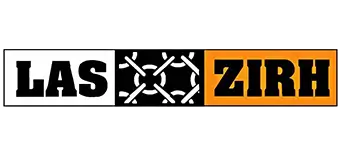Safety Measures and Best Practices in Industrial Mining
Industrial mining has transformed our ability to extract valuable resources from the earth. It drives economic growth and technological advancements. For this, it plays a crucial role in our modern world. however, the industry also faces significant safety challenges—unique hazards, including tire waste management.
Mining companies must adhere to stringent safety measures and best practices to ensure the well-being of workers and the environment. This blog explores these essential practices, focusing on managing tire waste in mining.
Additionally, we will delve into the issue of tire waste in mining and how it impacts safety and sustainability.
Importance of Safety in Industrial Mining
Safety in industrial mining isn’t just a priority; it’s a necessity. Miners face numerous hazards daily. These include cave-ins, explosions, equipment failures, and exposure to harmful substances. Implementing stringent safety measures can prevent accidents and save lives.
Regular safety training is essential for all workers. Training sessions should cover emergency procedures, equipment handling, and hazard recognition. Consistent training ensures that all employees are prepared for potential dangers.
Every day, miners work in potentially hazardous conditions. Thus, implementing robust safety measures can prevent accidents and save lives. Furthermore, safe mining operations contribute to higher productivity and morale among workers.

Tire Waste in Industrial Mining
Tire waste poses significant challenges in industrial mining. Heavy machinery relies on large tires, which wear out and accumulate quickly. Improper disposal leads to environmental hazards and safety concerns. Thus, understanding and managing tire waste becomes crucial.
Essential Safety Measures
Proper Training and Education
Workers must receive comprehensive training. They should understand all safety protocols and equipment use. Regular refresher courses keep their knowledge up-to-date.
Educate workers about tire safety and waste management. Conduct regular training sessions on proper tire handling and disposal. Awareness programs ensure everyone understands the importance of these practices.
Use of Personal Protective Equipment (PPE)
Miners should wear appropriate PPE at all times. Helmets, gloves, safety glasses, and steel-toed boots are non-negotiable. High-visibility clothing ensures that workers remain visible in all conditions. Respirators and hearing protection are also crucial. PPE acts as the first line of defense against physical injuries and health hazards.
Supervisors must ensure that all workers have access to and use PPE correctly. Regular inspections can help maintain the integrity of this equipment. Any damaged PPE should be replaced immediately to avoid risks.
Routine Equipment Inspections & Maintenance
Regularly inspecting machinery can prevent malfunctions. Maintenance checks should be thorough and frequent. This proactive approach minimizes the risk of equipment-related accidents.
Regular tire inspections and maintenance prevent accidents. Check tires for wear, damage, and proper inflation. Replace damaged tires immediately. Consistent maintenance extends tire life and reduces waste.
Proper maintenance of mining equipment is another critical safety measure. Malfunctioning machinery can cause severe injuries or fatalities. Regular maintenance schedules should be established and strictly followed. Equipment should be checked for wear and tear, and any issues should be addressed promptly.
Using the latest technology can also enhance equipment safety. Advanced sensors and automated systems can detect potential problems before they escalate. Implementing these technologies can significantly reduce the risk of accidents.
Emergency Preparedness
Emergency preparedness is essential in industrial mining. Mines should have well-developed emergency response plans. These plans should include evacuation procedures, communication protocols, and medical response strategies. Regular drills ensure that workers know what to do in case of an emergency.
Quick and efficient communication is vital during emergencies. Mines should have reliable communication systems in place. This ensures that help can be dispatched promptly, reducing the impact of the incident.
Health Monitoring and Support
Regular health checks ensure workers remain fit for their tasks. Mining companies should provide access to healthcare services. Addressing health concerns early can prevent serious issues.
Effective Communication Systems
Reliable communication systems are vital. Workers should be able to contact each other and supervisors easily. This is particularly important in emergencies.
Risk Assessments and Hazard Analysis
Conducting regular risk assessments helps identify potential hazards. Mitigating these risks proactively enhances safety. Involving workers in these assessments can provide valuable insights.
Best Practices for Industrial Mining
- Adoption of Advanced Technologies
Modern technologies can significantly improve safety. Automation and remote-controlled equipment reduce the need for human presence in hazardous areas. Implementing these technologies can minimize accidents.
- Environmental Management and Sustainability
Sustainable practices reduce the environmental impact of mining. Proper waste management, including tire waste, is crucial. Recycling and repurposing used tires can prevent environmental damage. Recycling and repurposing used tires prevent environmental damage. Companies should also explore ways to minimize water and energy consumption and rehabilitate mining sites post-extraction.
- Community Engagement and Responsibility
Engaging with local communities builds trust. Mining companies should address community concerns and contribute to local development. Transparent communication about safety practices can foster goodwill.
- Continuous Improvement Programs
Safety practices should evolve. Regular reviews and updates to safety protocols ensure they remain effective. Encouraging feedback from workers can lead to innovative safety solutions. - Implementation of Safety Protocols
Clear safety protocols should be established for all operations. Documented and practiced emergency procedures to ensure workers knew how to respond to crises. Regular drills and updates to these protocols help keep safety measures relevant and effective.


